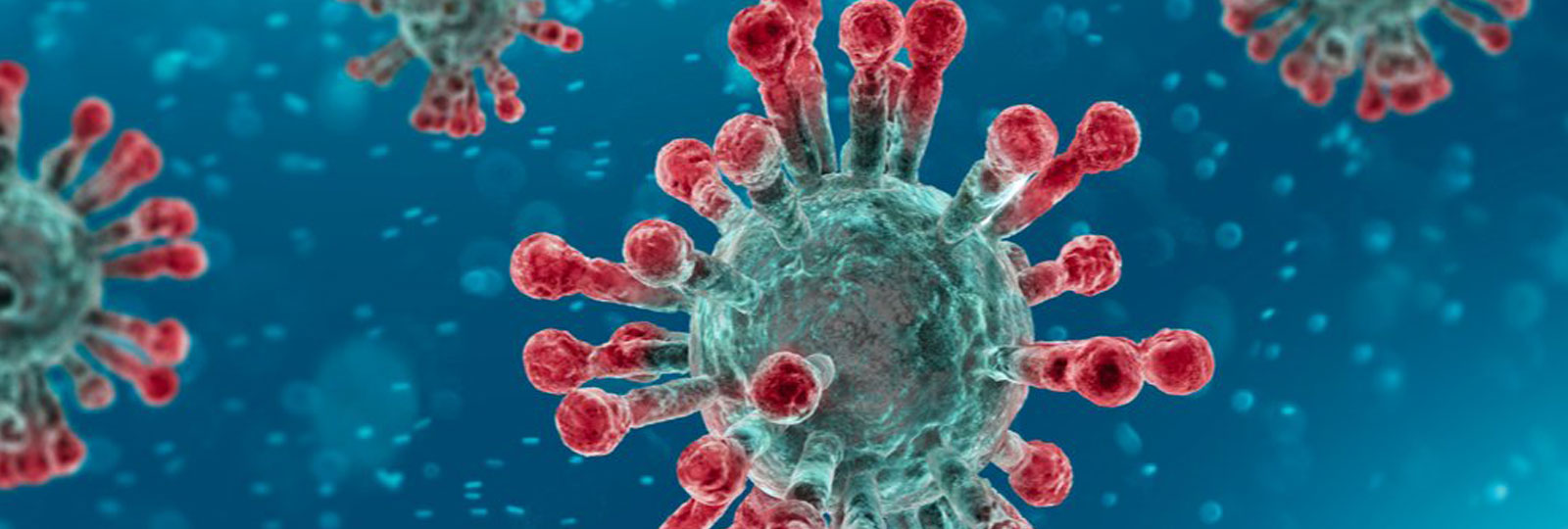
Over the last month, the emergence of a new strain of coronavirus has become a global health concern. According to the latest figures, there have been more than 71,000 cases so far, the vast majority within China.
Coronaviruses (CoV) are a large group of viruses that can cause severe respiratory tract infections in humans. This new strain, named Covid-19, has an incubation time between 2-10 days and is spread via droplets, contaminated hands or surfaces.
A new review of previous studies of coronaviruses, including Severe Acute Respiratory Syndrome coronavirus (SARS-CoV) that sparked an epidemic in 2003, has reported that human coronaviruses can persist on inanimate surfaces like metal, glass or plastic for up to nine days.
Professor Kampf and colleagues at the Institute of Hygiene and Environmental Medicine at the Greifswald University Hospital found that on average the virus can survive between 4 and 5 days, but that low temperature and air humidity can further increase their lifespan.
However, the researchers found that surface disinfection procedures with 0.1% sodium hypochlorite, 0.5% hydrogen peroxide, or 62-71% ethanol can significantly reduce coronavirus infectivity within one minute exposure time.
The necessity of environmental decontamination
Environmental decontamination plays a crucial role in infection prevention and control (IP&C). It can be achieved through a combination of cleaning and disinfection.
For years the healthcare environment was not thought to contribute significantly to the transmission of pathogens and other microorganisms. But it is now widely accepted that the environment can play a key role in the spread of infection in both healthcare environments and the community.
As is the case with any virus or infection, environmental decontamination of healthcare facilities is vital for controlling the potential spread of coronavirus.
The research by Professor Kampf and his colleagues demonstrates that the best way to deal with the problem of coronaviruses staying active on surfaces for up to nine days is to clean those surfaces with a solution that’s 62-71% ethanol, 0.5% hydrogen peroxide, or 0.1% sodium hypochlorite.
As Professor Kampf explains, “If these agents are applied in appropriate concentrations, they reduce the number of infectious coronaviruses by four so-called log steps within one minute: this means, for example, from one million to only 100 pathogenic particles.”
Increasing efficacy with automated decontamination procedures
Traditional and manual cleaning and disinfection practices are, however, often suboptimal. Failure to follow manufacturer recommendations can affect the efficacy of these decontamination practices. In fact, research shows that when manual disinfection is only ever partially effective – only 50% of hospital ward surfaces are adequately decontaminated with the use of manual chemical disinfection.
Newer, automated decontamination technologies, including those using vaporised hydrogen peroxide, can significantly improve the effectiveness of the decontamination process. Automated decontamination technologies using hydrogen peroxide vapour (HPV) have been found to reduce contamination levels by 95% from the levels observed after deep cleaning.
While automated decontamination technologies should never replace manual cleaning practices, they are a robust supplement.
UK Government advice for healthcare providers
Currently, there are nine known cases of Covid-19 in the UK. Many doctors surgeries and hospitals around the country have advised people not to come in if they believe they have symptoms and/or have recently returned from China and other countries where there have been more cases.
The UK Government have also issued the following guidelines for healthcare providers assessing, testing and caring for possible cases of Covid-19. The guidelines remain under review as more scientific information is published about the virus.
- Cleaning and decontamination should only be performed by staff trained in the use of the appropriate personal protective equipment (PPE)
- After cleaning with neutral detergent, a chlorine-based disinfectant should be used, in the form of a solution at a minimum strength of 1,000ppm available chlorine. If an alternative disinfectant is used within the organisation, the local IPCT should be consulted on this to ensure that this is effective against enveloped viruses.
- The patient isolation room should be cleaned at least once a day, and following aerosol generating procedures or other potential contamination
- There should be more frequent cleaning of commonly used hand-touched surfaces and of anteroom or lobby areas (at least twice per day)
- Dedicated or disposable equipment (such as mop heads, clothes) must be used for environmental decontamination
- Reusable equipment (such as mop handles, buckets) must be decontaminated after use with a chlorine-based disinfectant
- Communal cleaning trollies should not enter the room
- Trollies used to transport a patient from the isolation room should be disinfected
- When handling dead bodies, the outer surface of the body bag should be decontaminated immediately before the body bag leaves the anteroom area.
As no specific therapies are available for this new strain of coronavirus, early containment and prevention of further spread will be crucial to stop the ongoing outbreak and to control the infectious thread. And as Professor Kampf and his colleagues’ advocate, environmental decontamination will play a vital role in this.





